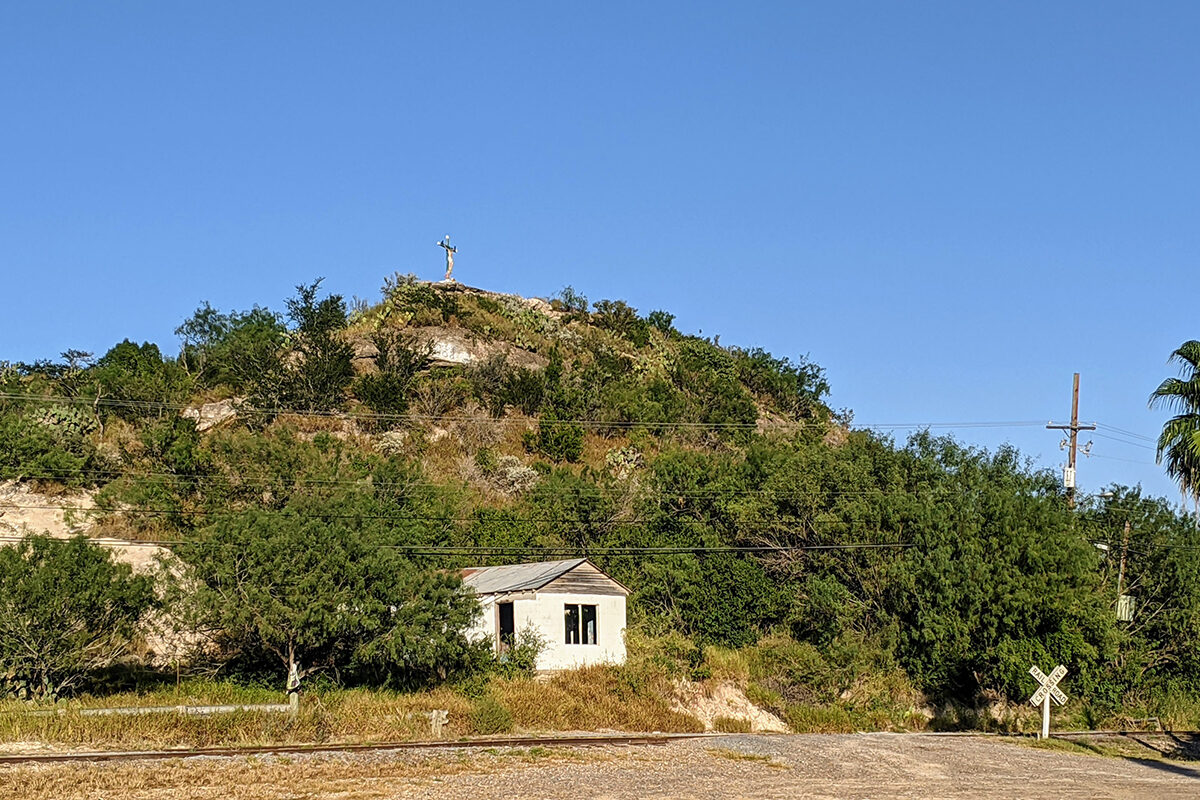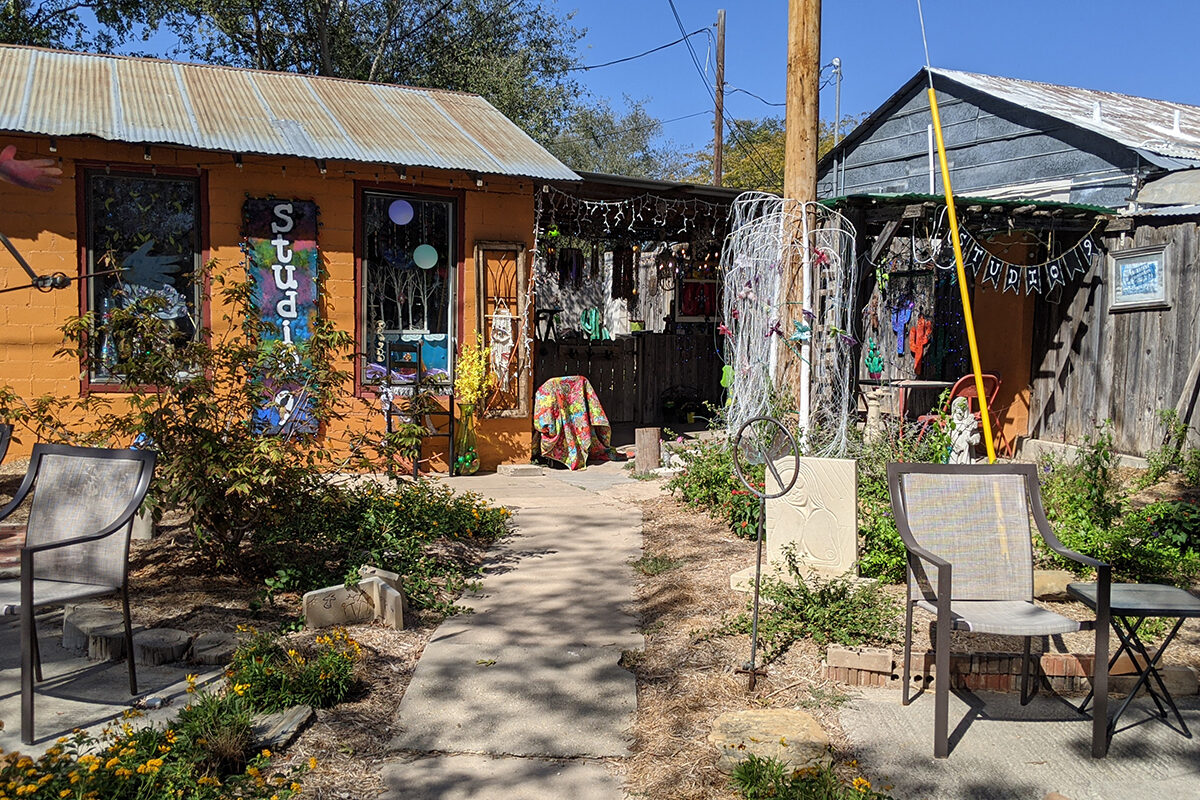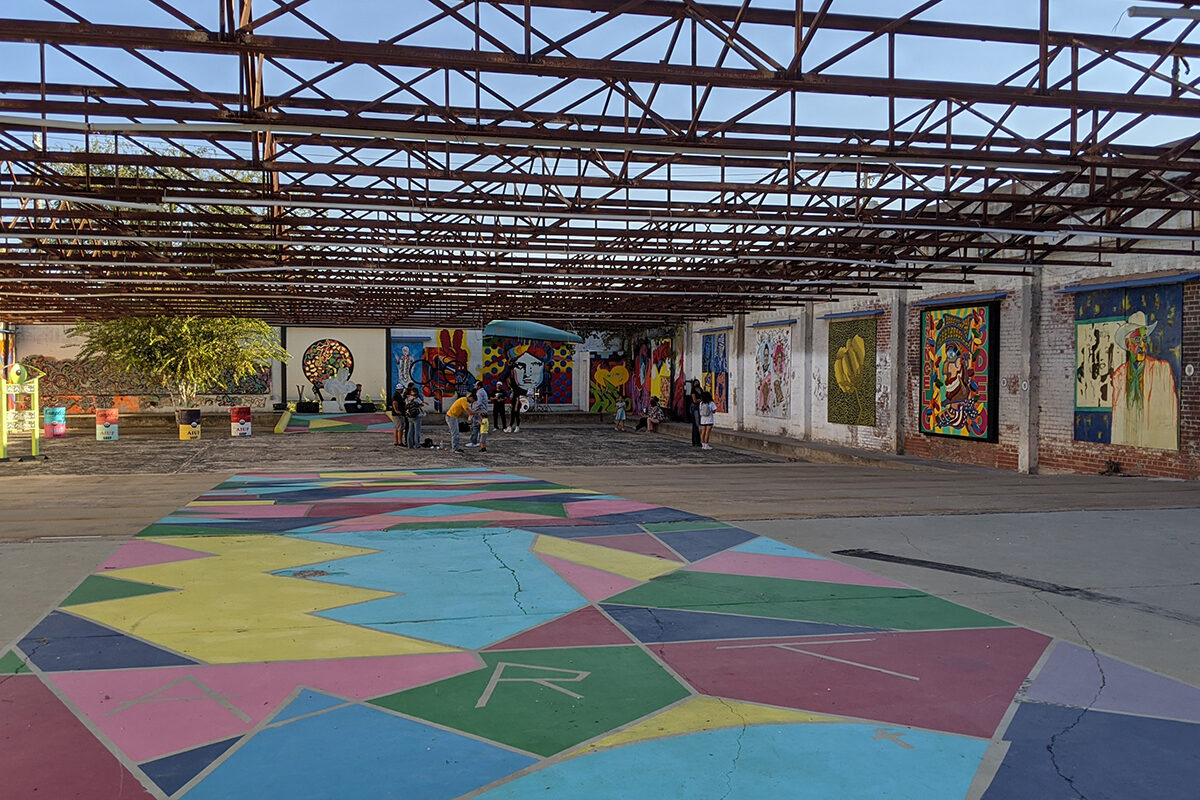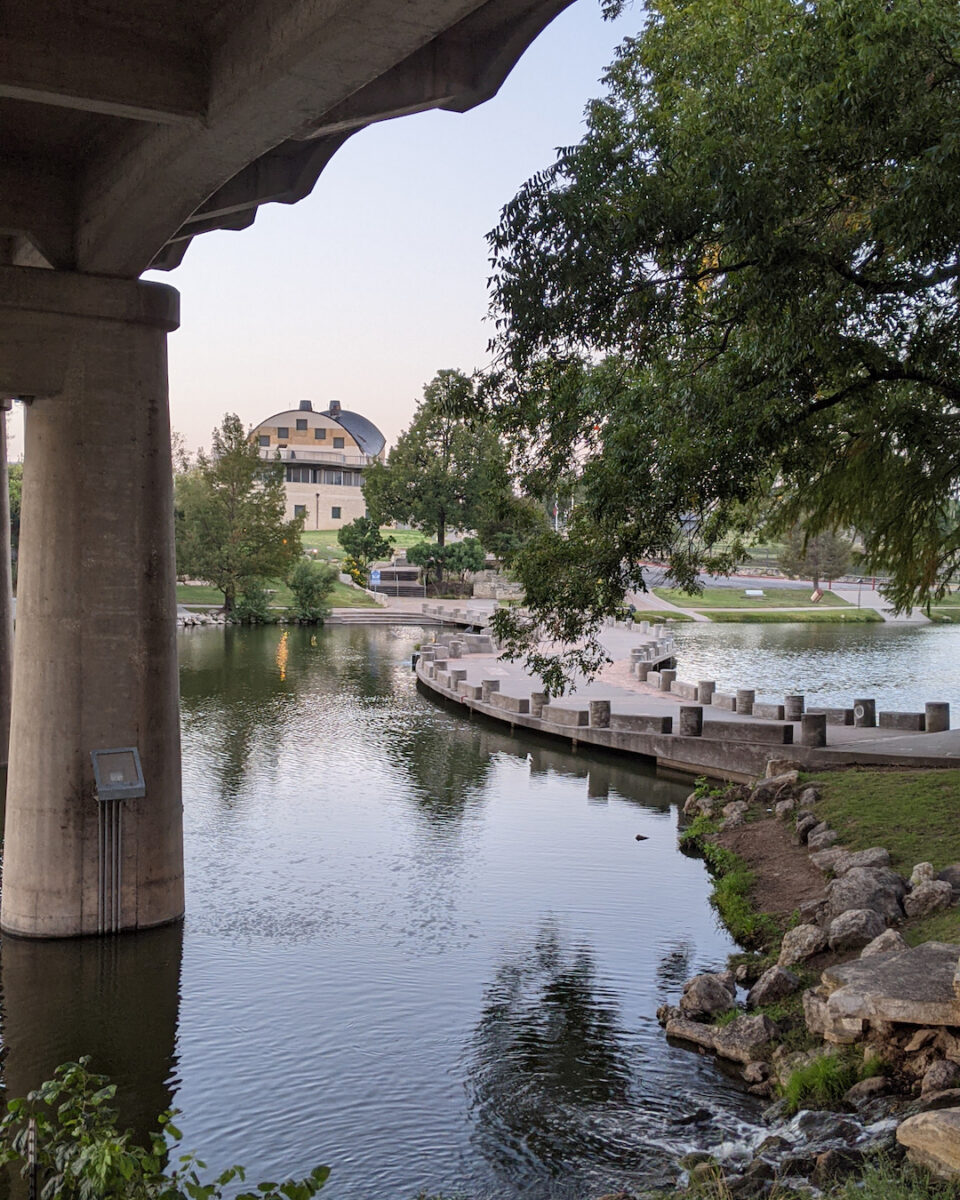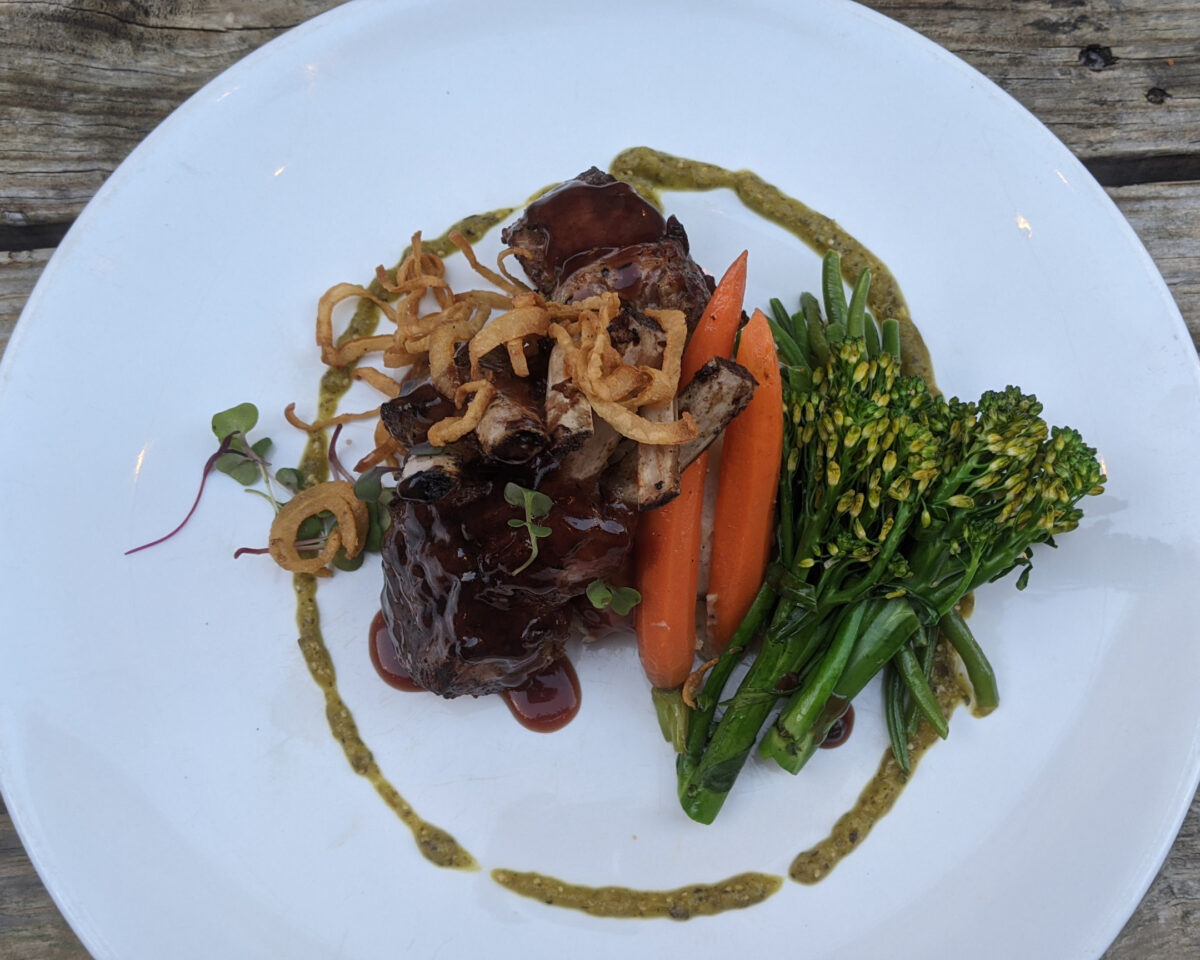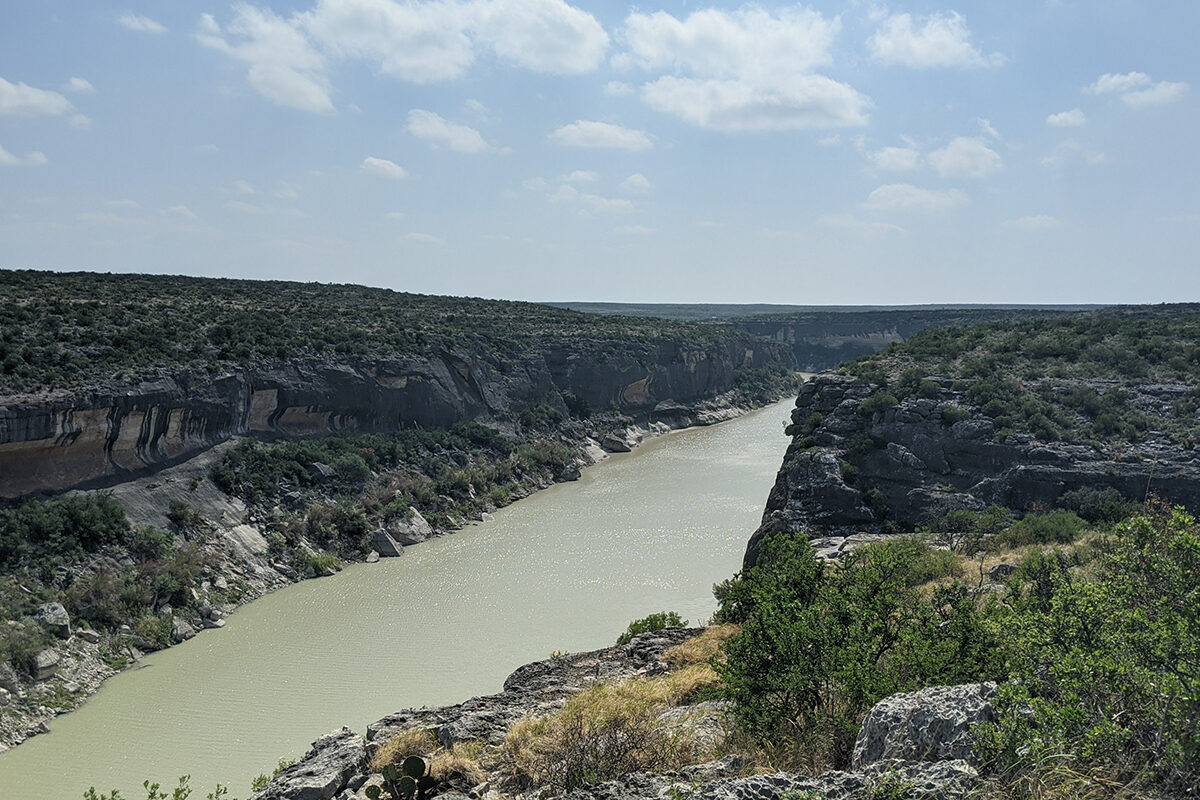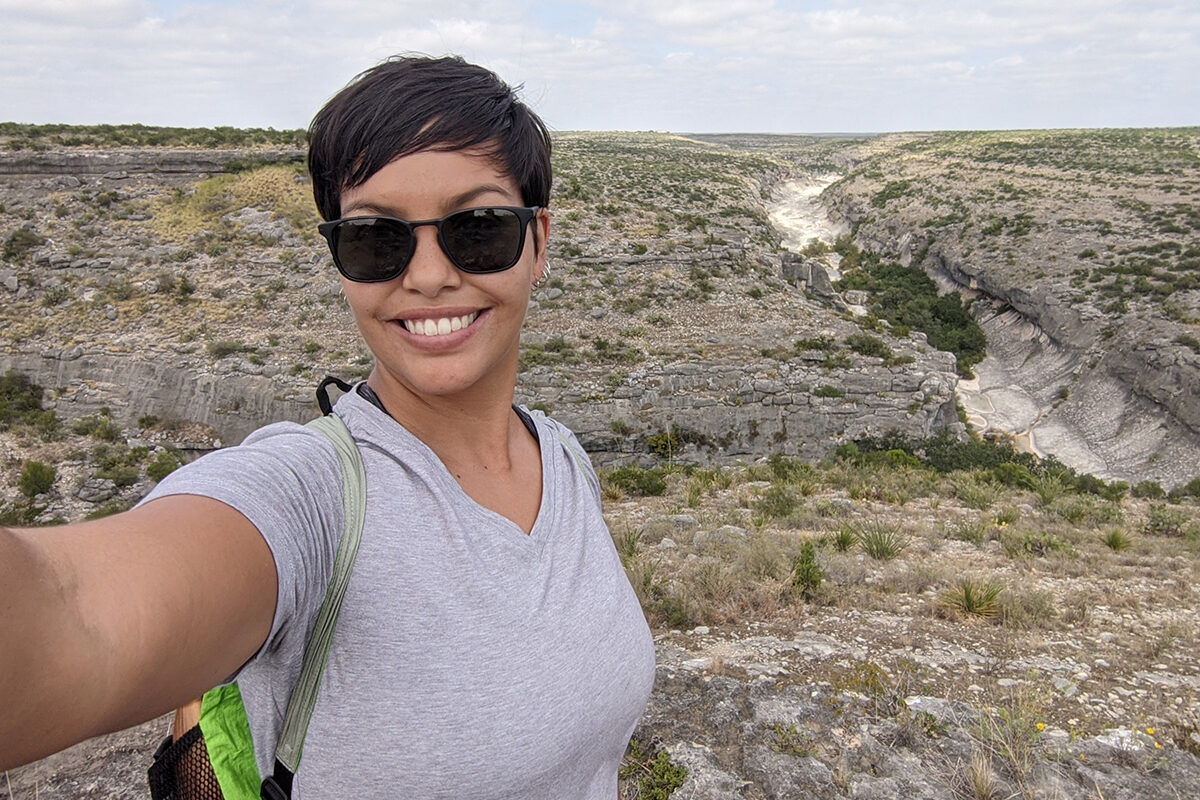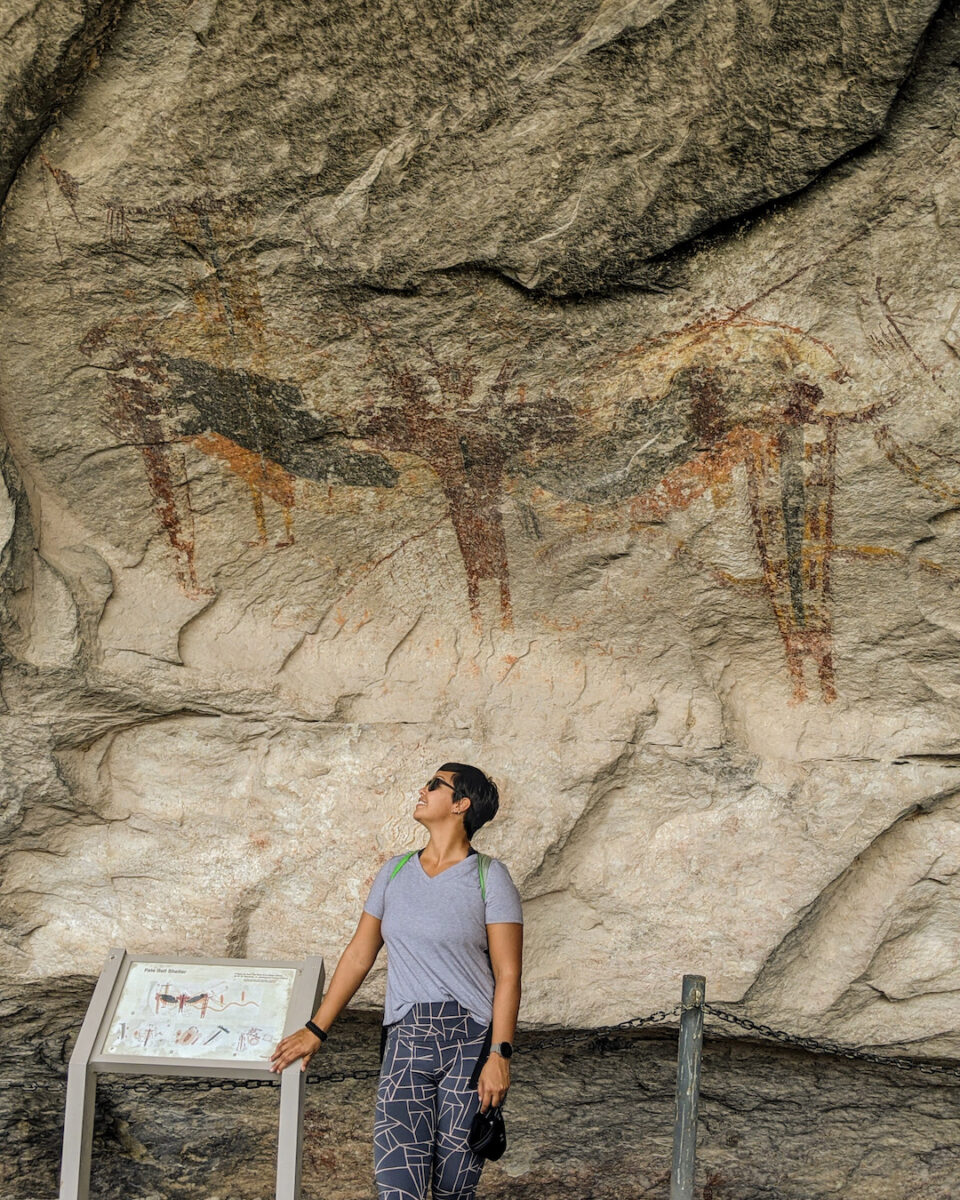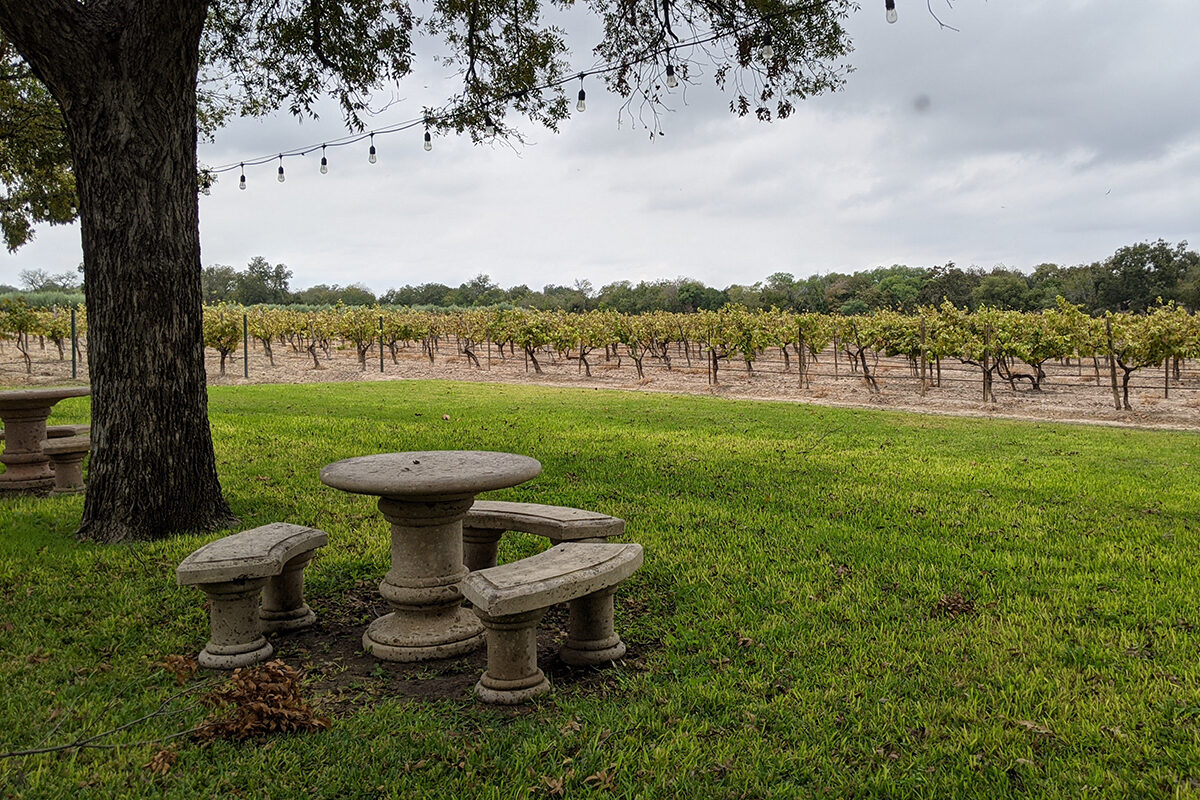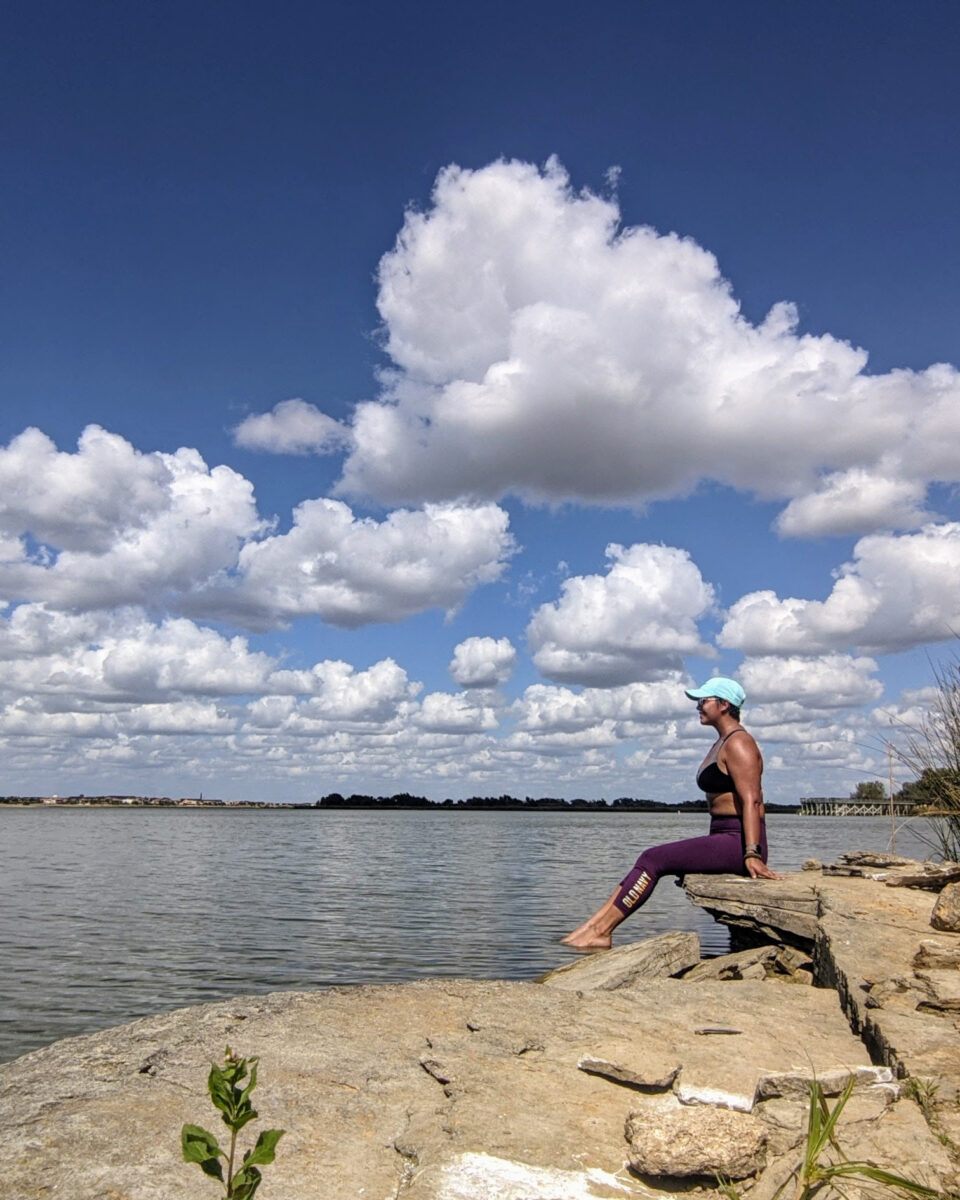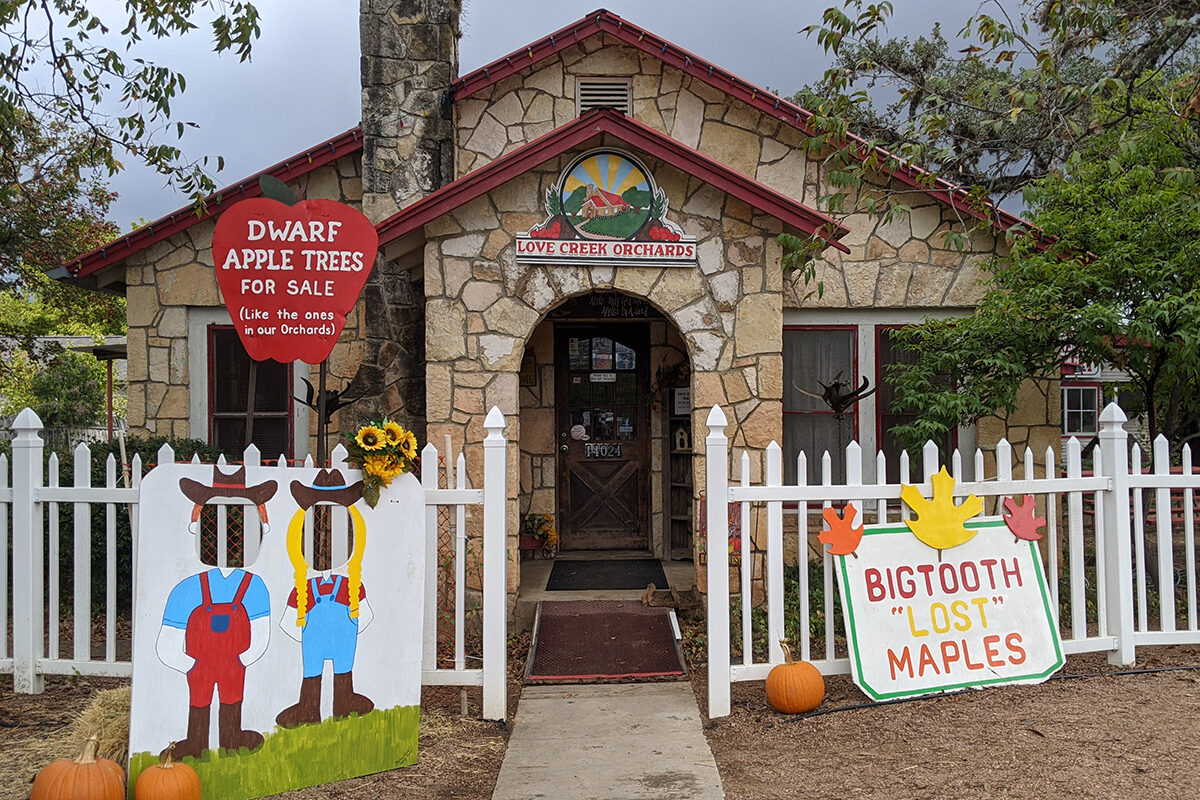On a road trip from San Angelo to Bandera, writer Alex Temblador explores identity in Texas—beyond stereotypes.
People don’t believe me when I say I’m from Texas. I don’t have big blonde hair, blue eyes, or a thick accent, and I don’t prescribe to conservative values or Western life—all widespread global and national perspectives about Texans.
These aren’t entirely misguided, but who I am—a half-Mexican, half-white author with short hair; a travel expert on diversity, equity, and inclusion; a lover of history and music that ranges from rock to blues, rap, and Latino—is Texas too. I want the world to know the Texas that I know, the Texas that represents who I am, so I took a road trip to highlight places and peoples that don’t get the attention they deserve.
I set off from my home base of Dallas for the Southern border, where my Mexican-American side hails from. I made stops in West Texas on the way down and the Hill Country on the way back. My goal was to learn about the history, culture, and socio-political injustices that make these regions what they are today.
In Laredo—the place where my father’s family hails—I had deep conversations with locals about the election, police corruption, border issues, and areas threatened by the invasion of the border wall. Laredo, with its mostly Mexican-American population, has always seemed to work hard to prove its patriotism— it’s the only city in the country with a month-long George Washington birthday celebration. I’ve witnessed this duplicity in my own family history. My great-grandfather, whose grave I saw in Laredo for the first time on this trip, was a POW in WWII, and yet I have his own handwritten account about how some U.S. soldiers did not believe he was American during the war in Germany.
Our ultimate guide to road trips →
In San Angelo, I spoke to Latino artists about the difficulties that BIPOC creators face in finding acceptance into art communities of small cities. In the 17th Street Entertainment District of McAllen, I stood in awe of a mural of the Statue of Liberty crying behind Donald Trump towering over cages of refugees and children being separated at the border. Two other murals, one in San Angelo and another in McAllen, were just as chilling: They honored Latino soldiers Vanessa Guillen and Elder Fernandes, who died in mysterious ways at Fort Hood, Texas, after reporting sexual assault and harassment.
What to pack for a two-week Texas road trip →
There were moments of discomfort on my trip, which was to be expected since I was traveling during a pandemic, and the week before the election. Political signs marred the lovely landscape, Border Patrol was a suffocating presence, and in some places, face masks were treated as an option instead of a life-saving tool. However, the pandemic, election, and newly ignited national conversation on racism made for an environment where locals wanted to chat about economic troubles, political concerns, and a changing world in which they’re trying to keep up.
Whether I was discussing Confederate statues with a park ranger, the restaurant industry with a Trump-supporting hipster, what life is like as a gay man of color living in a small predominately white town, the national perception of the Border and how that’s affected those living along the Border with a chef, or discussed one Latina’s split political views on liberal and conservative matters—it all turned out okay. What mattered is that we talked, and we listened.
Texas is a mix of competing ideas, cultures, and thoughts, but if there is one thing that stood out on my trip, it’s that no matter how different Texans may be, we cherish the natural beauty of our lands, have a penchant for storytelling, and we like to eat. And when things get tough, we’re there to help those who are inherently different from us. Because even if we don’t stand on the same side of history, race, sexual orientation, religious belief, gender, or personality, we’re all Texans. And that means something.
Day 1: San Angelo, Texas
Stay: I stayed at the Historic Sealy House Bed & Breakfast, a B&B built in 1908 that features high ceilings, antique furnishings, and a to-die-for black-and-white bathroom. Every morning a different breakfast was delivered to my room in a picnic basket.
Eat: Dinner was a delicious Tex-Mex platter of enchiladas and sopapillas at Fuentes Café Downtown, which reopened at the end of 2019 after a posh update to their bar and dining room. I had a great conversation with the Mexican-American owner, John Fuentes, whose family has been running the cafe for over 50 years, who spoke candidly about the struggle restaurants have faced in the pandemic and how his community has come together to try to help these industry workers out.
Do: I spent a few hours wandering Chicken Art Farm Center, a (you guessed it) chicken farm repurposed into a commune of artist studios and shops. I brought home a few ceramic and textile gifts and even caught the tail-end of a paint pouring art class.
Other highlights: On my way to dinner, I stopped by Paintbrush Alley and the Pop Art Museum, two outdoor art spaces with stunning murals by local artists, many of whom are BIPOC, like Cyris Ho, Marsalis Mahome, 2oonz, Lisa Fuentes, and Inx Davila.
Day 2: San Angelo, Texas
Stay: Another night at the Historic Sealy House Bed & Breakfast.
Eat: The day began with French toast and a Texas-sized mimosa at The Penny Tap House, a laid-back sports bar with a relaxing outdoor patio. That evening, I chowed down on lamb at the Angry Cactus, a restaurant serving up West Texas eats in creative new ways.
Do: My morning was spent running and walking along the Concho River Walk, stopping on occasion to admire public artworks, take photos on gorgeous bridges, and watch locals fish from one of nine Texas cities with a community fishing area.
Other highlights: I visited a few Latino artists in San Angelo, like Ashley Perales, owner of Pop of Art Color Gallery; Alejandro Castanon, an artist who infuses color in his portraits of celebrities; and Rene Alvarado whose larger-than-life pieces steal the scene in his home gallery inside a renovated church.
Day 3: Del Rio, Texas
Stay: Ramada by Wyndham Del Rio is about what you’d expect from the Ramada name—clean, safe, and comfortable. Upon arrival, I changed into my bathing suit and hit the indoor hot tub and pool which was a nice way to relax after a long day of hiking.
Eat: For dinner, I grabbed a pizza from Lou’s Woodfire Pizza and drove 20 minutes to Amistad National Recreation Area, home to Lake Amistad which extends between Texas and Mexico. I ate pizza, walked to one of the piers, and watched the colors of the changing sky at dusk reflect on the water.
Do: I spent most of my day at Seminole Canyon State Park and Historic Site, which is a 40-minute drive from Del Rio. In addition to completing an 8-mile hiking trail around the rim of the canyon, I had a tour with a park ranger of Fate Bell Shelter where I saw pictographs from the area’s earliest inhabitants. She also taught me about the contributions of the Black Seminole Scouts to Texas (the park is named after them) and how the park works to maintain and protect the historic pictographs and natural environment.
Day 4: Laredo, Texas
Stay: My suite at La Posada Hotel had a large balcony with views of Nuevo Laredo, Mexico. There was something romantic about this historic hotel, with its multiple courtyards, Spanish architecture, and location in the Main Square of Laredo.
Eat: I met up with my cousin, and we enjoyed a delicious steak dinner at the Tack Room, La Posada Hotel’s upscale restaurant best-known for steak and seafood dishes.
Do: Before leaving Del Rio for Laredo, I stopped at San Felipe Springs, the fourth largest spring system in Texas. If it had been warmer, I would have gone for a swim (yes, it’s allowed!), but I was quite content exploring different sections of the springs.
Other highlights: Val Verde Winery was the last stop I made in Del Rio before heading to Laredo. Founded by an Italian immigrant family, it’s the oldest winery in Texas, nestled in an old neighborhood of the city. I grabbed a bottle of rosé and explored the historic vines that have been making Texas wine since 1883.
Day 5: Laredo, Texas
Eat: Lunch was a delicious mole at La India Packing Company. The owner sells packaged spices and is known for her healthy versions of Mexican favorites. We had a great talk about the election, border politics, and public health issues in Laredo, which gave me a better sense of what the mostly Latino population in the region experiences. For dinner, I paired a red wine from Mexico with tasty shrimp and a huitlacoche tenderloin at Border Foundry.
Do: In Laredo, I visited the Washington Birthday Celebration Museum to look at photos and displays of a month-long festival in Laredo that celebrates George Washington’s birthday (it’s the only one of its kind in the U.S.!). I spent the afternoon trail running on desert-like paths and climbing up hills for lake views at Lake Casa Blanca International State Park. My father visited the park as a kid, so it was quite a special experience to be able to dip my toes in the same lake he did as monarch butterflies swarmed around me on their migration to Mexico. That afternoon, I visited the graves of my great-grandparents for the first time. It was nice to reflect on the contributions of my family—like my great-grandfather’s service as a POW in WWII with the U.S. army.
Other highlights: In the morning, I visited the Max A. Mandel Municipal Golf Course, which is a 30-minute drive from Laredo. It’s one of the most beautiful courses in the world, blending the local desert environment with lush golf greens that are watered by its neighbor, the Rio Grande. Part of the course and natural environment is being threatened by the border wall.
Day 6: Rio Grande City, Texas
Stay: I spent the night in the Dwight D. Eisenhower room at La Borde House, named so because the president once stayed in the room during a visit to the area. A hot bath in the clawfoot tub made for a relaxing experience as I read a brochure about how the B&B once had hidden tunnels under the property, supposedly created in conjunction with Al Capone.
Eat: Tex-Mex was on the menu at Caro’s Mexican Restaurant. I had their puffy tacos, which is about like they sound – delicious tacos in a puffy shell.
Do: I spent my afternoon on the Bessie III Historic Trolley tour where I learned about Rio Grande City’s history from a woman whose family has lived there for generations. Afterward, I walked through the Old Rio Grande City Cemetery before spending time at Our Lady of Lourdes Grotto Rio Grande City—a replica built in the 1900s of the famed grotto found in France. Be sure to see it at night when it is lit by colorful lights.
Other highlights: To break up the drive between Laredo and Rio Grande City, I stopped first in San Ygnacio to see the historic Jesus Trevino Ranch and Fort built in the 1830s, and then in Roma, Texas, to admire the colorful and architectural masterpieces in the historic district that were designed by German immigrant Enrique Heinrich Portscheller.
Day 7: McAllen, Texas
Stay: Casa de Palmas, a Trademark by Wyndham property, has a stylish Spanish design with beautiful courtyards, including one with a pool. My room was modern in design with a kitchen and seating area.
Eat: Before leaving Rio Grande City, I had a Mexican breakfast of tacos and Mexican pastries at Faby’s. It held me over until lunch at Costa Messa in McAllen where I enjoyed tortilla soup and a mango margarita with chamuy. Dinner was a classy affair in the beautiful courtyard patio at Salome on Main, named after the Mexican wife of John McAllen, who founded the city. The chef at Salome is trying to showcase that Mexican food isn’t just Tex-Mex favorites, tacos, or street food—it’s elevated cuisine with variety.
Do: I couldn’t leave Rio Grande City before hiking up a steep hill to La Santa Cruz, a holy site where Mexican curandero Domingo Pedro performed a miracle for the region in 1900—bringing much-needed rain during a horrible drought. Today, there stands a cross where people light candles before enjoying some stellar views. Once in McAllen, I explored the art murals in the 17th Street Entertainment District, which featured street art that criticizes Trump’s border wall and a #JusticeForElder mural demanding justice for the mysterious death and sexual assault of Fort Hood soldier, Elder Fernandes. I also stopped at Cine El Rey, a historic theater built for Hispanic communities during segregation that welcomed the biggest Latino names in music and theater in the mid-1900s.
Other highlights: On the way to McAllen, I stopped at La Lomita Mission, built in the 1850s, and had a brief conversation in Spanish with an elderly Mexican woman who told me how she helped maintain the beautiful altar. Unfortunately, I didn’t have time to stop in Los Ebanos, Texas, to experience the last hand-pulled ferry that crosses the U.S.-Mexico border, but I’ll be sure to have my passport on-hand the next time I’m in the area.
Day 8: McAllen, Texas
Eat: Breakfast was at Rex Café, the go-to place for a Mexican breakfast at their vintage lunch counter (or a quick-stop to grab Mexican sweet bread from their panadería or bakery). Lunch was a sandwich at Feldman’s Market Center, and dinner ended up being a large amount of sushi from Yasuke.
Do: I spent the morning walking through Quinta Mazatlan, one of nine World Birding Centers in Texas, in search of a Green Jay (which I saw!). The center teaches visitors about the natural environment of the Rio Grande Valley. I fell in love with the center’s Spanish Revival-style adobe hacienda, Folk Art Room, and outdoor public artworks. I ended the day by visiting the largest single-story library in the U.S., the McAllen Public Library—which has policies in place to make it easy for non-residents or those without driver’s license identification to enjoy their services.
Day 9: Bandera, Texas
Stay: I snuggled into a one-bedroom cabin with a spacious bathroom at Al’s Hideaway Rental. The patio was my favorite aspect because it was the perfect vantage point to see deer at dawn and dusk.
Eat: I said farewell to McAllen with a brunch of biscuits and chorizo gravy at Bodega Tavern and Kitchen. Dinner was at the Old Spanish Mission Trail, a Bandera favorite known for a wall of John Wayne photos and the best darn pies.
Do: Before dinner, I walked around the downtown shops – antique stores and boutiques – of Bandera, the Cowboy Capital of the World.
Other highlights: On the drive from McAllen to Bandera, I stopped in Falfurrias at Don Pedrito Jaramillo’s shrine and burial spot. People visit from all over the world to ask for blessings from the famous deceased curandero, a folk healer. When he was alive in the 1800s, the Mexican curandero performed healings for poor people of Mexican descent who couldn’t afford doctors or weren’t treated equally in medical establishments.
Day 10: Bandera, Texas
Eat: At lunch, I chowed down on a hamburger at Love Creek Orchard’s Apple Store and washed it down with the best apple pie (paired with apple cinnamon ice cream) I’ve ever had. For dinner, I got stuffed on a Philly cheesesteak pizza, Buffalo chicken pizza, and a great glass of wine at The Dough Joe.
Do: Most of my day was spent hiking a five-mile route in the hilly and picturesque Lost Maples State Natural Area. However, I made time to stop in Medina, which is famous for the dwarf apple trees at Love Creek Orchards and Bigtooth maple trees at Love Creek Nursery.
Other highlights: Before driving to Medina, I made a pit stop at Polly’s Chapel and Cemetery. This long-forgotten historic chapel was built by Policarpio “Polly” Rodriguez, a Mexican scout and one of the earliest settlers in the area. He was a Justice of the Peace, a successful rancher, and a peacekeeper between Texas Rangers and Indigenous communities.




